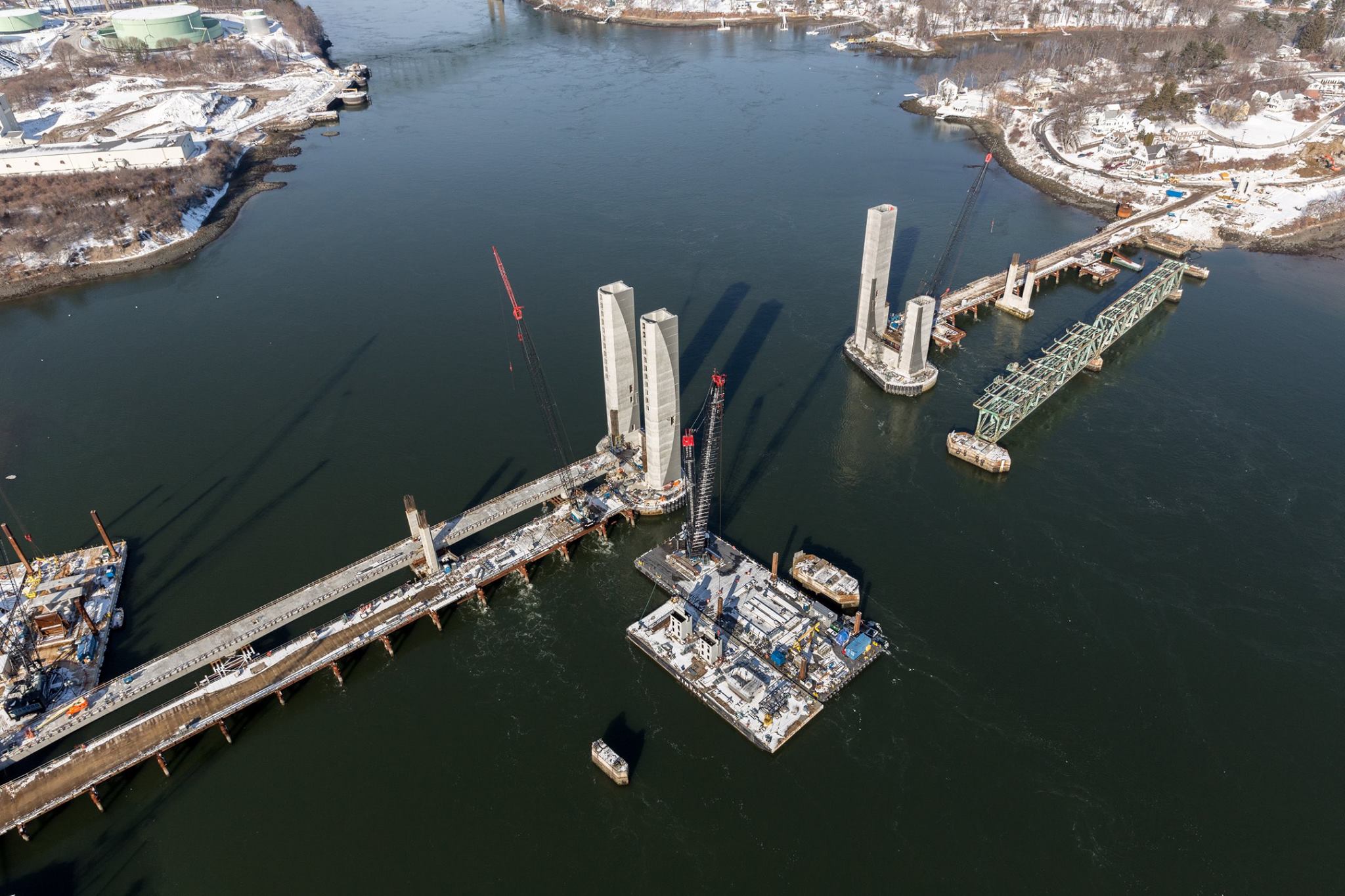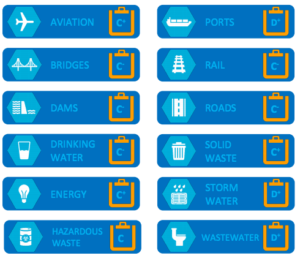New Hampshire’s Infrastructure is in Jeopardy. What is the Legislature Doing About It?

New Hampshire’s infrastructure is crumbling, and it’s not just the state’s roads and bridges. A total of 12 infrastructure categories received a “mediocre” or “poor” rating, according to a Wednesday survey by the American Society of Civil Engineers (ASCE), highlighting the lack of time and investment the state has made into these projects.
Overall, the state’s infrastructure grade was a C-minus, which is a decrease from the last time the engineers conducted a survey of the state. In 2011, the state earned a C.
New Hampshire’s new grade is slightly higher than the United States’ grade, which was a D-plus.
“New Hampshire’s infrastructure is living on borrowed time thanks to past generations’ investments,” said Logan Johnson, chairman of the Report Card for New Hampshire’s Infrastructure. “We’re not investing in the maintenance and modernization our infrastructure needs to support a thriving economy.”
A team of professional engineers from across the state assessed the 12 categories and found these areas need upgrades to stay operational:
The state’s energy and airport systems received the best score with a C-plus, but the ports, wastewater, and storm water systems scored the lowest grade with a D-plus.
Much of the focus at the legislative level will be on roads and bridges.
According to the state Department of Transportation (DOT), there are about 17,000 miles of roads in the state. The ASCE says there are 3,848 bridges, including 2,160 state bridges, and 1,688 municipal bridges in New Hampshire.
The state also has about 150 red-listed bridges, meaning they are in poor condition, must be inspected every two years, and be at the top of the state’s priority list of funds for repair or replacement. The ASCE found that 492 of New Hampshire’s 3,848 bridges — approximately 13 percent – were structurally deficient.
Gov. Chris Sununu has been a big proponent of improving the state’s infrastructure. In his budget, he proposed creating a $84 million Infrastructure Revitalization Fund to address some of the problems identified in the ASCE’s report, like with bridges and roads.
“This is one of the highest numbers in the country of red listed bridges,” he said during his gubernatorial campaign. “These are where our priorities need to go. Infrastructure is absolutely critical in a small state like New Hampshire, a state that’s centralized to the entire New England region. We have to get our priorities straight and we have to make tough decisions to get those projects done.”
The problem is that the estimated cost to repair or replace some of the red-list bridges is more than six times the amount Sununu proposed. That’s something Victoria Sheehan, commissioner of the N.H. DOT, said would happen if infrastructure funding is constantly kicked down the road in the legislature.
“When we defer investment, it can cost three or four times as much to get back to the same level condition,” she recently told New Hampshire Public Radio. “So, for example, if we can keep up with pavement conditioning, doing pavement preservation treatments, that’s a much lower cost in maintaining the infrastructure. Once [roads have] deteriorated, to do a full reconstruction or rehabilitation can cost a lot more money to the taxpayer. We are so underfunded at times, we make those per investment choices that end up costing more in the long run.”
U.S. Sen. Jeanne Shaheen, (D-N.H.), reintroduced legislation in the Senate that would begin to address the more than 56,000 structurally deficient bridges across the country. The Strengthen and Fortify Existing Bridges (SAFE Bridges) Act, which was also cosponsored by New Hampshire’s other Democratic senator, Maggie Hassan, would establish a program to provide funding specifically for repairing and replacing structurally deficient bridges. It would authorize an additional $2.75 billion annually through 2020 to enable state’s to fix their bridges and funding would be allocated through a needs-based formula according to their share of the nation’s deficient bridges.
“The condition of New Hampshire’s bridges is unacceptable,” Shaheen said in a statement. “Their disrepair hurts our economy, increases traffic, adds wear and tear to vehicles, and puts public safety at risk. The consequences of bridge failures are catastrophic and it is critical that Congress prioritize this infrastructure. My legislation provides a long overdue initial investment to help repair and replace New Hampshire’s structurally deficient bridges while putting Granite Staters to work.”
The ASCE survey also found that the state’s dams were increasingly at risk of being structurally deficient. About 60 percent of New Hampshire dams were built before modern dam safety engineering standards were developed.
The “years of inattention” resulted in shoddy conditions at many of the state’s ports and extensive flooding could happen unless the state makes some adjustments in how it manages storm water.
The Legislature recently made drinking water and storm water a priority during this legislative session. Both areas need improvement, according to the ASCE survey, which gave New Hampshire’s drinking water a C-minus and storm water a D-plus. The Senate is working on legislation that would give more funds to cities and towns to improve their drinking water, after recent developments which found high traces of harmful chemicals in several seacoast towns’ water supply. Sununu also is hoping the Environmental Protection Agency rolls back some storm water regulations poised to go into effect that could cost municipalities millions of dollars to comply.
The ASCE report notes that in order for the state to meet its infrastructure needs, “lawmakers need to pursue consistent policies and funding sources to ensure sustained support for infrastructure and enable long-term planning. The state needs to pursue more locally sourced funding for infrastructure, rather than relying so heavily on federal funding and financing to supplement the state’s budget for infrastructure investment.”
The report also called for consistent policy and funding sources and for the state to to pursue “more locally sourced funding,” like fully funding the Water Infrastructure Finance and Innovation Act, identifying “dependable, long-term sources of funding” for the cleanup of contaminated sites, and considering a toll increase to finance major turnpike projects.
Sign up for NH Journal’s must-read morning political newsletter.




